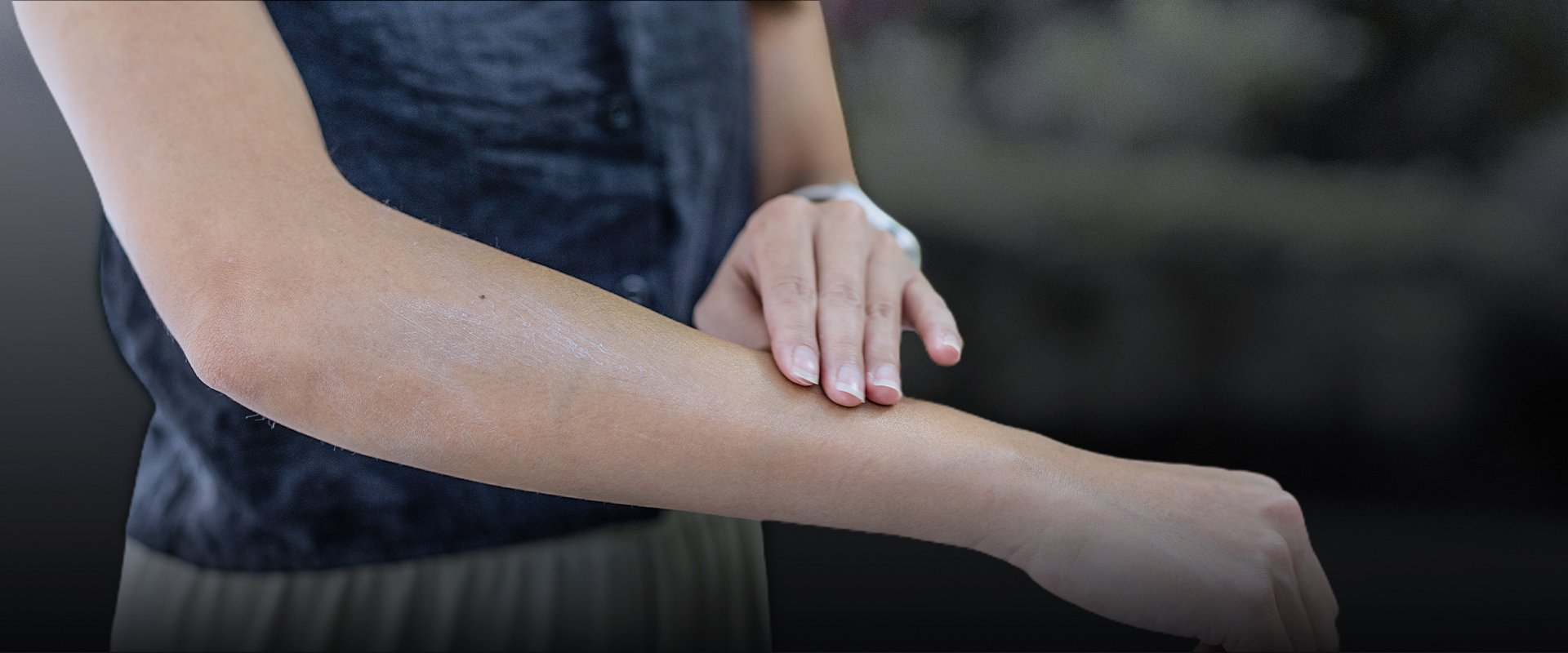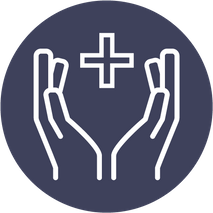
Physical Therapy for forearm
AT EVOLVE
Physical Therapy for forearm
HOW CAN PHYSICAL THERAPY HELP MY FOREARM?
Symptoms of pain, weakness, stiffness, numbness or tingling can signal a problem with the musculoskeletal or neuromuscular system. Physical therapists are trained in the evaluation and treatment of neuromuscular and musculoskeletal injuries, and physical therapy is an excellent and conservative treatment option for many of these conditions affecting the forearm. PTs can address acute, recurrent or chronic forearm symptoms and are involved in post-operative rehabilitation following forearm surgery. By providing symptom relief and identifying and addressing contributing factors, physical therapy can help you achieve long-lasting results.
WHAT DOES PHYSICAL THERAPY FOR THE FOREARM LOOK LIKE?
While every case of forearm rehab is different, my staff and I will apply the best, evidence-based techniques to address your symptoms. We will start with an initial evaluation to better understand your medical history and the pattern of symptoms you are experiencing. We will discuss your goals for physical therapy and examine your forearm and any other areas of the body that may be contributing to your symptoms. With all this knowledge in hand, we will create a custom program that may consist of hands-on techniques performed by our therapists on your forearm and nearby areas combined with carefully prescribed movements and exercises performed by you in the clinic and at home.
WHEN WILL I BEGIN TO SEE RESULTS?
While full resolution of symptoms can take some time, you may begin to see some results right away. You should experience improvements in symptoms such as pain, stiffness, and inflammation within a couple of weeks but returns in strength, flexibility and overall mobility may take longer. Achieving long-lasting results may take some time, but dedication to your program will not only help you achieve these results but will help to decrease the likelihood of symptoms recurring in the future.
WHAT CONDITIONS OF THE FOREARM DO PHYSICAL THERAPISTS TREAT?
The forearm refers to the area of the arm between the elbow and the wrist. It is made up of two long bones called the radius and ulna. The forearm moves in two ways–pronation and supination–which turns the palm face down and face up, respectively. This motion is very important for the functional use of the hand as it helps position the hand in space. Several ligaments stabilize the two bones at either end and along their length and fifteen or so muscles and tendons pass through this area on their way to the wrist and hand.
There are quite a few conditions that can affect the forearm area. Because of the number of muscles that originate in or just above the forearm, a muscle that moves the wrist, hand or fingers can cause symptoms in the forearm. Let’s look at some of the more common forearm conditions and symptoms treated by physical therapists. Also note that surgery can be used to treat some of these conditions and a physical therapist may be involved in post-op rehabilitation afterwards.
Tennis Elbow (Lateral epicondylitis): inflammation or chronic irritation of the extensor tendons of the wrist and fingers that originate at the lateral elbow. Repetitive wrist or finger extension such as when flicking a tennis racquet back can cause symptoms of tennis elbow including pain, burning or aching at the lateral (outside) of the elbow and sometimes extending down toward the wrist. Elbow stiffness and forearm and grip weakness can develop if not treated.
Golfer’s Elbow (Medial epicondylitis): inflammation or chronic irritation of the flexor tendons of the wrist and fingers that originate at the medial elbow. Repetitive wrist or finger flexion such as when carrying a heavy suitcase or hitting a golf ball can cause symptoms of golfer’s elbow including pain, burning or aching at the medial (inside) of the elbow and extending down toward the wrist. In more severe cases you may experience numbness or tingling that starts at the elbow and radiates along the inner forearm to the hand and fingers when gripping and tenderness along the inside of the upper elbow where the tendons attach. Stiffness in the elbow and even weakness in the forearm and hand with gripping can occur over time.
Forearm fracture: Fractures of the radius and ulna often happen as a result of a fall on an outstretched hand
Elbow arthritis: While this condition technically involves the elbow joint, achiness can radiate down into the forearm
Carpal Tunnel Syndrome: The numbness, tingling and burning associated with carpal tunnel syndrome is typically felt in the first 3 (and sometimes part of the 4th) fingers, however, in some cases, it can radiate upwards into the forearm. Carpal Tunnel Syndrome is caused by compression of the median nerve where it travels through the carpal tunnel of the wrist.
Cervical Radiculopathy: Burning, aching, numbness and tingling caused by compression or irritation of the C5-C8 cervical spine nerves can be felt in the forearm. While treating the neck is needed to improve these symptoms, it is important to know that forearm symptoms can be referred from elsewhere in the body.
End Injury Progression
Forearm physical therapy has proven to prevent injury, slow and even stop pain issues, improve performance, and reverse injury progression in many cases.
Relieve Pain
The movements used in this technique can target your entire body helping you to manage discomfort and pain during the course of your physical therapy treatments.
Improve Range of Motion
Posture awareness is an important area to focus on due to the fact that certain positions may cause you further discomfort and pain.
Restore Mobility
You can regain mobility and flexibility by taking part in the stretches and exercises as prescribed by your physical therapist.
How Long Will FOREARM Physical Therapy Last?
If you decide to work with a physical therapist to help correct your MSK issues, your entire treatment plan could consist of around 8-20+ different physical therapy sessions that will each last 60-90 minutes. Once you complete your customized physical therapy treatment plan, you will be able to continue to do the prescribed stretches and exercises utilized during your PT sessions yet in the comfort of your own home.
WHAT FOREARM SYMPTOMS CAN IMPROVE WITH PHYSICAL THERAPY?
- Aching, burning, sharp or dull pain
- Pain that worsens with activity
- Numbness or tingling in the forearm or hands
- Feelings of tightness or stiffness
- Pain in the joints
- Weakness in the forearm or grip
WHAT PHYSICAL THERAPY TREATMENTS ARE AVAILABLE TO TREAT THE FOREARM?
Physical therapy treatment goals for the forearm are to relieve symptoms while addressing any underlying or contributing factors that may predispose you to recurrence or progression of the symptoms or injury. As mentioned above, my team and I will create an individualized treatment plan based on your unique presentation and the findings of our exam but here are some treatments commonly used in forearm rehabilitation:
- Modalities and manual therapy to manage pain, inflammation and swelling
- Modalities, manual therapy and exercise to improve joint, muscle and tissue mobility to improve range of motion and reduce stiffness
- Exercises to build strength, improve endurance and align tissues to promote healing
- Neuromuscular re-education activities to improve coordination, muscular recruitment and motor control
- Functional and sport-specific training to prepare the forearm for return to work, leisure and athletic activities
Mill Basin (located in Harbor Fitness)
6161 Strickland Ave
Brooklyn, NY 11234
Monday: 7am-8pm
Tuesday: 7am-8pm
Wednesday: 8am-5pm
Thursday: 7am-8pm
Friday: 8am-1pm
Park Slope (located in Harbor Fitness)
550 5th Ave.
Brooklyn, NY 11215
Monday: 9am-8pm
Tuesday: 8am-6pm
Wednesday: 9am-8pm
Thursday: 8am-6pm
Friday: 8am-3pm
Gravesend
372 Avenue U
Brooklyn, NY 11223
Monday-Thursday: 8am-8pm
Friday: 8am-3pm
Kings Highway
945 Kings Highway
Brooklyn, NY 11223
Monday-Wed.: 12pm-8pm
Ready to take the next step to a healthier you?
Contact Us Today!
PHYSICAL THERAPY FOR FOREARM
Need forearm physical therapy?
Let our caring and compassionate physical therapists help you with relieving pain while getting you back on your feet comfortably.
Call now to schedule your first PT consultation free of charge.
Call: 1-718-258-3300






